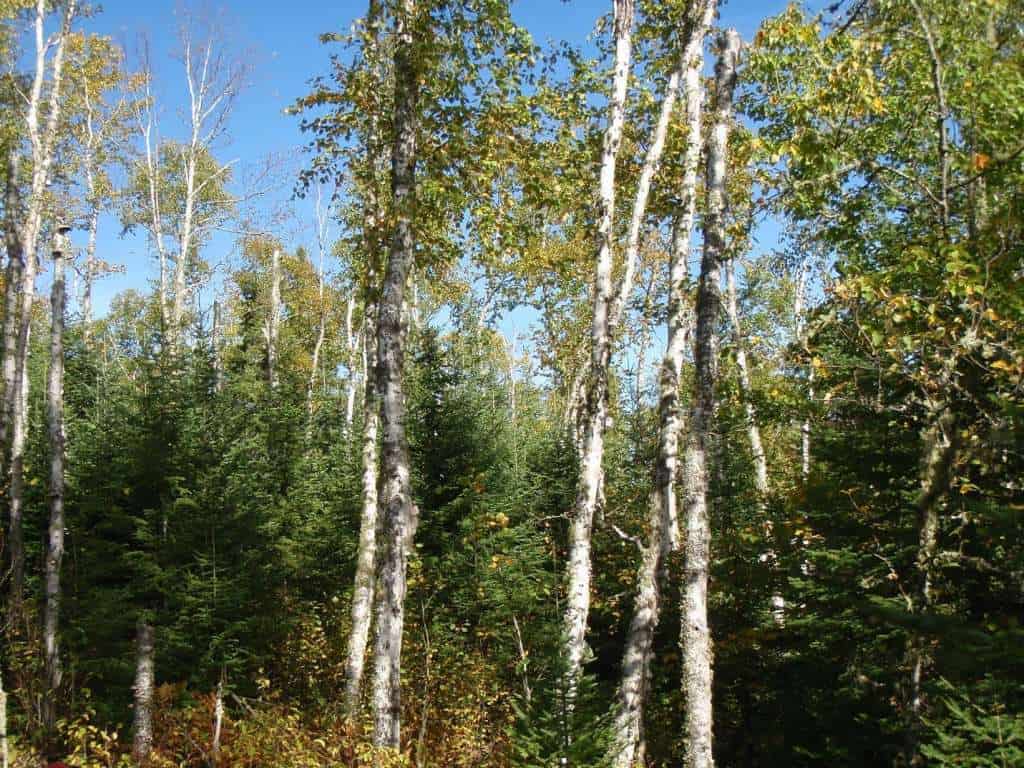
The Superior National Forest has completed most of its planning for a significant project to cut, burn, and thin about 8,000 acres north and east of the Gunflint Trail. The ShokoShoe project will provide lumber as well as anticipated wildlife benefits with large clear-cuts and prescribed burns.
The newly-arrived chief ranger of the Gunflint Ranger District recently visited Grand Marais radio station WTIP for an interview about the project.
Listen
While the project has been going through analysis, planning, and public input for more than two years, ranger Michael Crotteau only took over the district about four months ago.
After issuing a final decision in January, the Forest Service is now implementing the project. Logging and thinning could start late this year, while burns are not anticipated until at least 2019, due to a backlog.
The project borders the Boundary Waters on the west and the Grand Portage reservation on the east side. It will affect about 7 percent of its 115,000 project area, or about 20 percent of the National Forest lands within those boundaries.
Goals and concerns

Management activities are planned around Poplar, Hungry Jack, East and West Bearskin, Mcfarland, and numerous other well-known lakes at the edge of the wilderness area.
Most of the activities will involve either clear-cut logging (3,600 acres) or understory fuels reduction (2,900 acres).
Key issues raised throughout the process include prescribed burning near popular recreation lakes and private structures, building 24 miles of temporary logging roads that could be adopted by motorized vehicle users and disrupt wildlife habitat, and the possibility of attracting deer instead of moose. Timber harvest would not include the region’s iconic and imperiled white pines.
The project is expected to create 4,700 acres of the type of young forest the moose prefer to forage. The population of the animals has shrunk dramatically in the past decade, and forest managers are eager to provide the patches of aspen and other trees that moose like to eat. Despite being the heart of the area hosting most of Minnesota’s moose herd, only about 1 percent of the area is currently the young forest the animals need. But whitetail deer also eat the same food, and if they find suitable habitat, the project could lead to the further demise of moose by transmitting diseases from deer.
Environmental mitigation in the plan includes avoiding lynx and wolf den sites, and roost sites of the endangered long-eared bat. All logging will stay at least 400 feet from the edge of lakes and streams, as required by law. Crotteau says prescribed fires near lakes, cabins, and homes will be low intensity to minimize the negative effects. Much of the mechanized activity will take place in winter, when wet areas and soils are frozen, which should affect the noise impacts.
Nonetheless, the Forest Service anticipates some users on some Boundary Waters lakes could hear logging noise during the project. The Forest Service says it will have a minor effect on the wilderness experience.
“Opportunities for solitude for visitors to the BWCAW would be impacted by treatments in the ShokoShoe Project Area, but based upon the small scope and short-term duration of sound, these impacts would be limited to visitors travelling on lakes and trails on the periphery of the BWCAW,” the Environmental Assessment states. “These impacts would be limited to travelers in the semi-primitive non-motorized and semi-primitive motorized management areas where opportunities for solitude are already low to moderate.”

